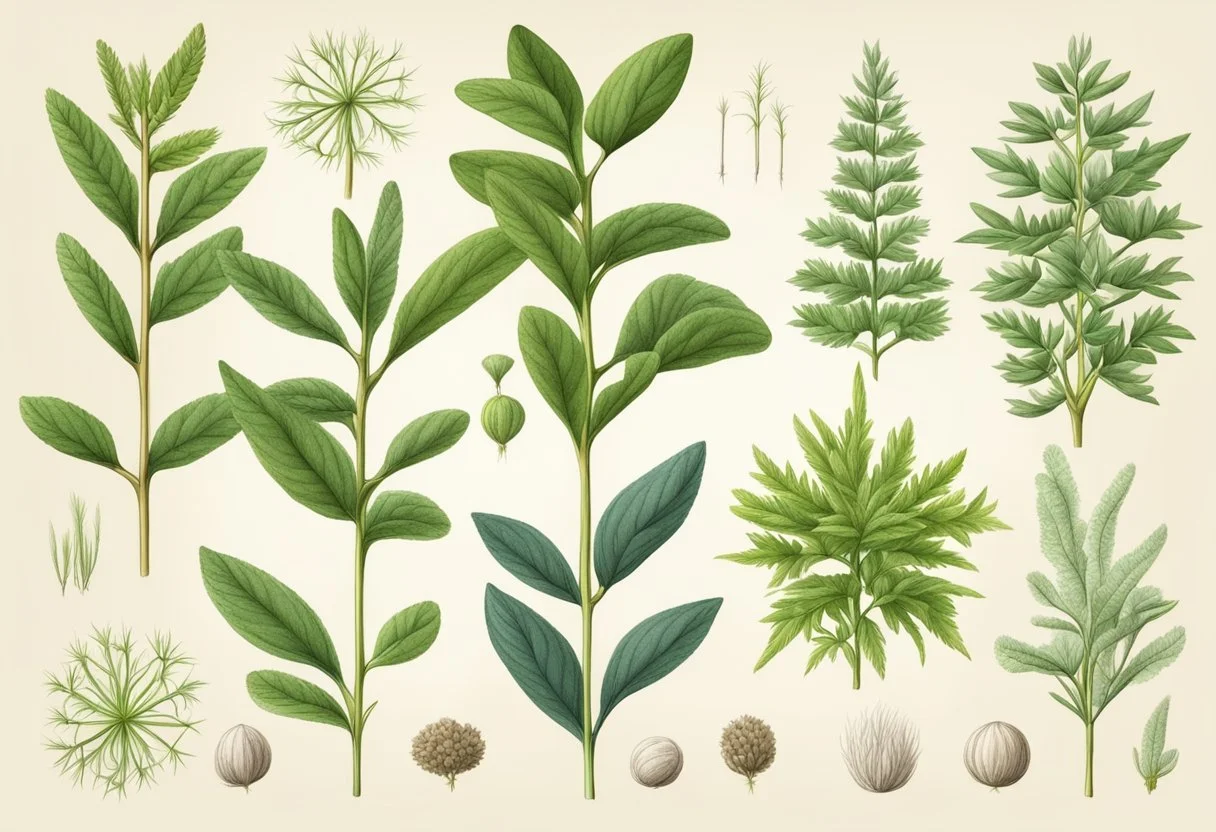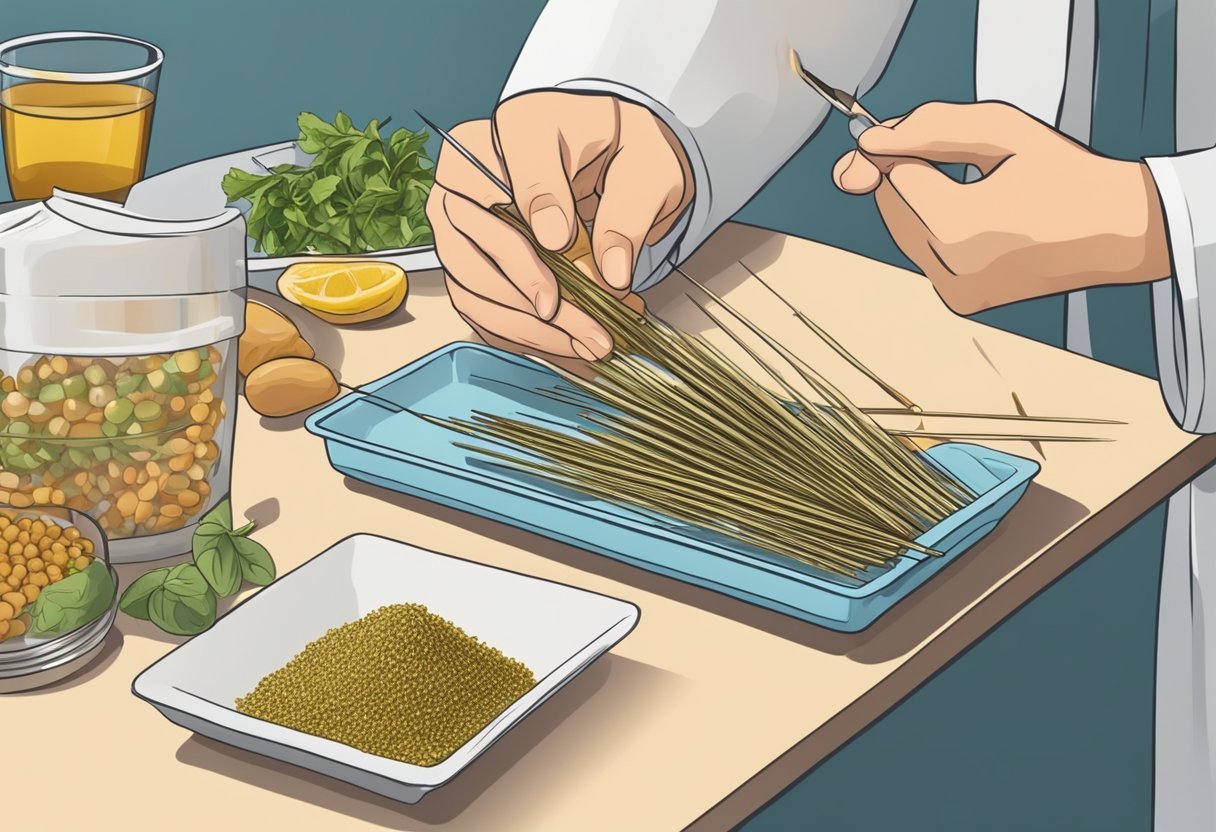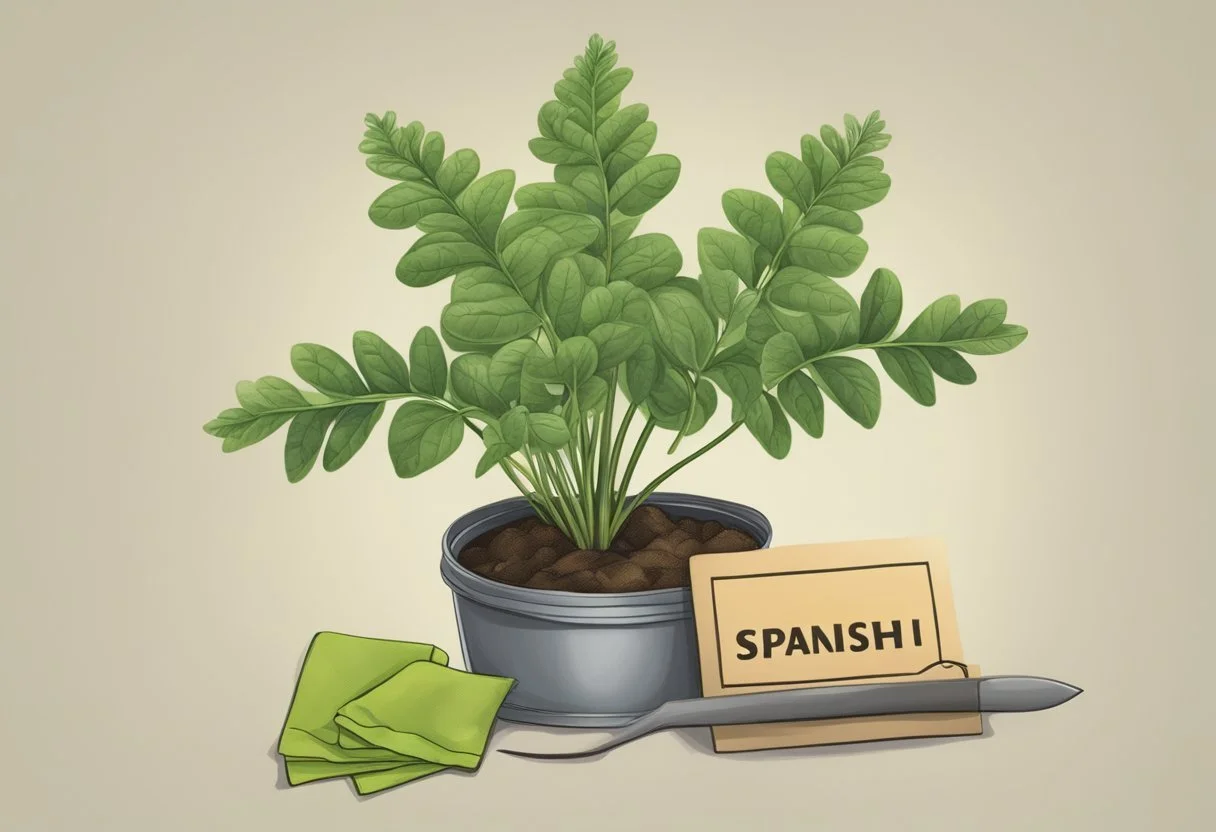Spanish Needle Benefits
Exploring the Healing Power
This article is part of our series on Natural Health
Discover > Natural Health > Spanish Needle Benefits
Spanish needle (Bidens pilosa) is a flowering plant native to North and South America, but can now be found across various regions worldwide. Known for its delicate white flowers and needle-like seeds, (how long do seeds last?) this herbaceous plant has garnered attention for its numerous potential health benefits. Throughout history, traditional medicine practitioners have recognized Spanish needle's properties and incorporated it into various treatments.
The plant contains a variety of compounds, including flavonoids, polyphenols, and sterols, that contribute to its therapeutic effects. Research has shown that Spanish needle may offer a range of health benefits, such as immune system support, anti-inflammatory properties, and digestive aid. This versatility makes it an attractive option for those seeking natural remedies for common ailments.
In recent years, scientific investigation has aimed to validate the traditional uses of Spanish needle and explore its mechanisms of action. This growing body of research helps us better understand the plant's potential in modern healthcare, while also shining a light on the remarkable properties found in nature. With continued study, Spanish needle's full range of benefits may become increasingly clear and useful to a wider audience.
Understanding Spanish Needle
Spanish needle (Bidens pilosa) is a versatile and hardy annual flowering plant belonging to the Asteraceae family. Found throughout the Americas, particularly in South and Central America, this tropical plant is known by various names, including needle grass, demon spike grass, black jack, broomstick, and beggars tick, as well as xian feng cao in Chinese.
Growing to heights of up to 2 meters, Spanish needle is commonly found in fields, gardens, and disturbed areas and is characterized by its needle-like seeds. The plant produces small, white flowers, featuring yellow centers, which typically bloom from summer through early fall. The flowers give way to narrow and stiff seeds that exhibit a needle-like structure, explaining the plant's unique moniker. In addition to its distinctive seeds, Spanish needle also boasts elongated, oval-shaped leaves that form along its stem.
Known for its resilience and adaptability, Spanish needle thrives in a variety of environments, from tropical to subtropical regions. As a member of the Asteraceae family, it shares traits with other notable flowering plants, such as sunflowers, daisies, and chrysanthemums.
Beyond its appearance, Spanish needle has long been utilized for its various benefits. Its leaves, seeds, and flowers have all been employed in traditional medicine practices throughout history – particularly in the Americas. Today, ongoing research continues to investigate the potential uses of this versatile plant, further cementing its status as a plant with both natural beauty and practical applications.
Spanish Needle as Food
Spanish Needle (Bidens pilosa) is a versatile and nutritious plant that offers various benefits when consumed as food. Its leaves and stems have been used as a potherb in many different cultures, with a variety of dishes showcasing its subtle flavors.
One popular way to enjoy Spanish Needle is by incorporating it into callaloo – a flavorful Caribbean dish. In this recipe, the leaves are typically sautéed with onions, garlic, and spices like thyme and Scotch bonnet pepper, then simmered in coconut milk. The result is a delicious and nutritious meal with a unique flavor profile.
Another option for using Spanish Needle in the kitchen is to incorporate it into soups or salads. The tender leaves add a pleasant texture and a mild, slightly bitter taste to these dishes. When combined with other leafy greens and dressed with a refreshing vinaigrette, it creates a satisfying and healthful meal.
In addition to its uses as a potherb, Spanish Needle flowers can be used for decorative purposes in dishes or to make a soothing tea. The seeds are edible as well and can be ground into flour or used to make porridge when properly processed.
Regardless of the specific application, it is hard not to appreciate the versatility and nutrition offered by Spanish Needle in the culinary world. The options are only limited by the creativity of the cook, which makes it an excellent addition to any food-lover's repertoire.
Medical Uses and Health Benefits
Spanish needle, a well-known medicinal herb, has been employed in traditional medicine for centuries. Its various health benefits attract those seeking natural remedies for numerous ailments.
This herbal plant has been effectively used to treat infections and wounds. It possesses anti-inflammatory properties which make it helpful in reducing inflammation and pain associated with cuts and other skin injuries. Spanish needle is also believed to provide relief for cold and flu symptoms, thanks to its immune-boosting abilities.
Digestive issues can be addressed with Spanish needle, as it aids in soothing stomach ailments and improving liver function. It works to strengthen the body's tissues and has been used in the management of diabetes by regulating blood sugar levels.
Some research suggests that Spanish needle may exhibit potential benefits in cancer treatment, although further studies are required to substantiate these claims. The herb has also been employed to treat dysentery, edema, and jaundice.
A word of caution, though: Spanish needle may cause allergies in some individuals, and it is not recommended for breastfeeding mothers. Always consult a healthcare professional before incorporating Spanish needle or any medicinal herb into your daily routine.
In conclusion, the numerous health benefits of Spanish needle make it a valuable addition to a well-rounded healthcare regimen. Incorporating this versatile herb into your daily routine can improve well-being and help maintain a healthy lifestyle.
Bioactive Compounds in Spanish Needle
Spanish Needle (Bidens pilosa) is a plant known for its impressive range of medicinal properties. A significant reason for its effectiveness as a natural remedy is the presence of numerous bioactive compounds. Many of these compounds contribute to the plant's antimicrobial, antioxidant, antibacterial, and antimalarial properties.
One of the major groups of bioactive compounds in Spanish Needle is flavonoids. These naturally occurring compounds exhibit antioxidant properties that help protect the body against free radicals. As a result, they can aid in preventing oxidative stress-related health issues.
Spanish Needle also contains compounds that exhibit antibacterial and antimicrobial properties. This has made the plant particularly useful in traditional medicine, as its extracts can be employed to treat infections. For example, diuretic properties in Spanish Needle have been utilized to combat urinary tract infections.
Antimicrobial properties of Spanish Needle are mainly attributed to the presence of polyacetylenes and flavonoids. The combination of these compounds effectively inhibits the growth of various harmful bacteria, fungi, and viruses, making the plant a natural and potent antimicrobial agent.
In addition, Spanish Needle exhibits antimalarial effects. The plant contains various phytochemicals that have been shown to possess antimalarial properties, with researchers pinpointing the presence of sesquiterpene lactones as a primary contributor to this function. This makes Spanish Needle a potentially valuable natural resource for combatting malaria, a disease that affects millions globally.
Furthermore, Spanish Needle possesses antiseptic properties, which contribute to its use as a natural oral care remedy. Its antiseptic capabilities make it useful as a natural mouthwash, as it aids in the prevention of oral infections, combats bad breath, and promotes overall oral health.
In conclusion, the bioactive compounds present in Spanish Needle contribute to its wide range of beneficial properties, making it a powerful natural remedy for various health issues.
Preparation and Consumption
Spanish needle, a versatile plant with numerous health benefits, can be prepared and consumed in various ways. One popular method is to make a tea or infusion by using the plant's leaves and flowers. To prepare a Spanish needle tea, simply steep the fresh or dried leaves and flowers in boiling water for 10-15 minutes. This tea is known to help with digestion, provide antioxidants, and promote wound healing.
For topical application, a poultice can be made from the crushed leaves of Spanish needle. This poultice may aid in reducing itching and inflammation on the skin. To make a poultice, grind the fresh leaves and apply the paste directly to the affected area, covering it with a clean cloth or bandage.
In addition to teas and poultices, Spanish needle can be brewed into a more concentrated extract. To create an extract, the roots, leaves, and flowers of the plant are boiled down, and the remaining liquid is consumed. This extract offers a potent dose of the plant's beneficial properties, including relief from vomiting and enhanced wound healing.
It is important to remember that, while Spanish needle offers several health benefits, it is essential to use caution and consult a healthcare professional before incorporating any new herbal remedies into your routine. By following proper preparation and consumption methods, individuals can safely take advantage of the numerous benefits that Spanish needle has to offer.
Potential Risks and Precautions
Spanish needle, a common weed found in many parts of the world, offers numerous health benefits. However, it is essential to be aware of its potential risks and necessary precautions when using it for medicinal purposes.
Pregnant women should avoid consuming Spanish needle, as it may cause uterine contractions, leading to potential complications during pregnancy. It is also essential to be cautious about allergic reactions, as some individuals may be sensitive to the plant's components. Symptoms of allergies may include skin irritations, respiratory issues, or digestive discomfort.
When using Spanish needle topically to address joint discomfort, swellings, or skin issues, applying a small patch test on the skin is highly recommended to gauge any adverse reaction. Moreover, if symptoms persist or worsen, it's advisable to consult a healthcare professional.
Spanish needle, when ingested to treat colic or expel worms, should be consumed in moderation, as excessive use could cause digestive issues. An infusion of the plant or its juice may be prepared with appropriate dosages and consultations with a knowledgeable practitioner.
For treating conjunctivitis and other eye inflammations, a Spanish needle infusion might be used as an eye wash. However, it's crucial to ensure that the solution is free from any impurities to avoid further irritation.
As an expectorant, Spanish needle may provide relief from respiratory issues. However, it is important to follow appropriate guidelines when administering it for these concerns, as misuse could lead to complications.
Finally, while Spanish needle is known to have beneficial properties for cells, it is essential to remain within safe limits and consult with a medical professional before incorporating it into any treatment.
Natural Health Solutions for Personal Care and Wellness
Natural health practices can provide a range of benefits for personal care and wellness. Foot scrub recipes can be made with natural ingredients like sugar, salt, and essential oils to help exfoliate and moisturize the feet. These ingredients can be mixed together and gently rubbed onto the feet for a natural and effective solution.
Phthalates are a group of chemicals commonly used as plasticizers and fragrances in personal care and household products. These chemicals have been linked to a range of health concerns, including hormonal disruption and reproductive issues. Choosing natural and organic products that are free from phthalates can help to reduce exposure to these harmful chemicals.
Birthing affirmations can help to promote a positive and empowering birth experience. By repeating affirmations like "I trust my body to birth my baby" or "I am strong and capable", you can help to reduce fear and anxiety and promote a more positive outlook on childbirth.
Lemon and salt scrubs can be made with natural ingredients like lemon juice, salt, and coconut oil to provide a natural and effective solution for exfoliating and moisturizing the skin. These ingredients can be mixed together and gently rubbed onto the skin for a refreshing and invigorating experience.
By incorporating natural health practices into your daily routine and making healthy choices for personal care and wellness, you can support your overall health and well-being in a sustainable and holistic way. It's important to do your own research and consult with a healthcare professional before using any new remedies or making significant changes to your diet or lifestyle.
#spanish needles #bidens pilosa var #medicinal plants #bidens alba #biden pilosa #fresh plant #lowers blood pressure #dried plant #medicinal plant #reduce inflammation #bidens bipinnata





